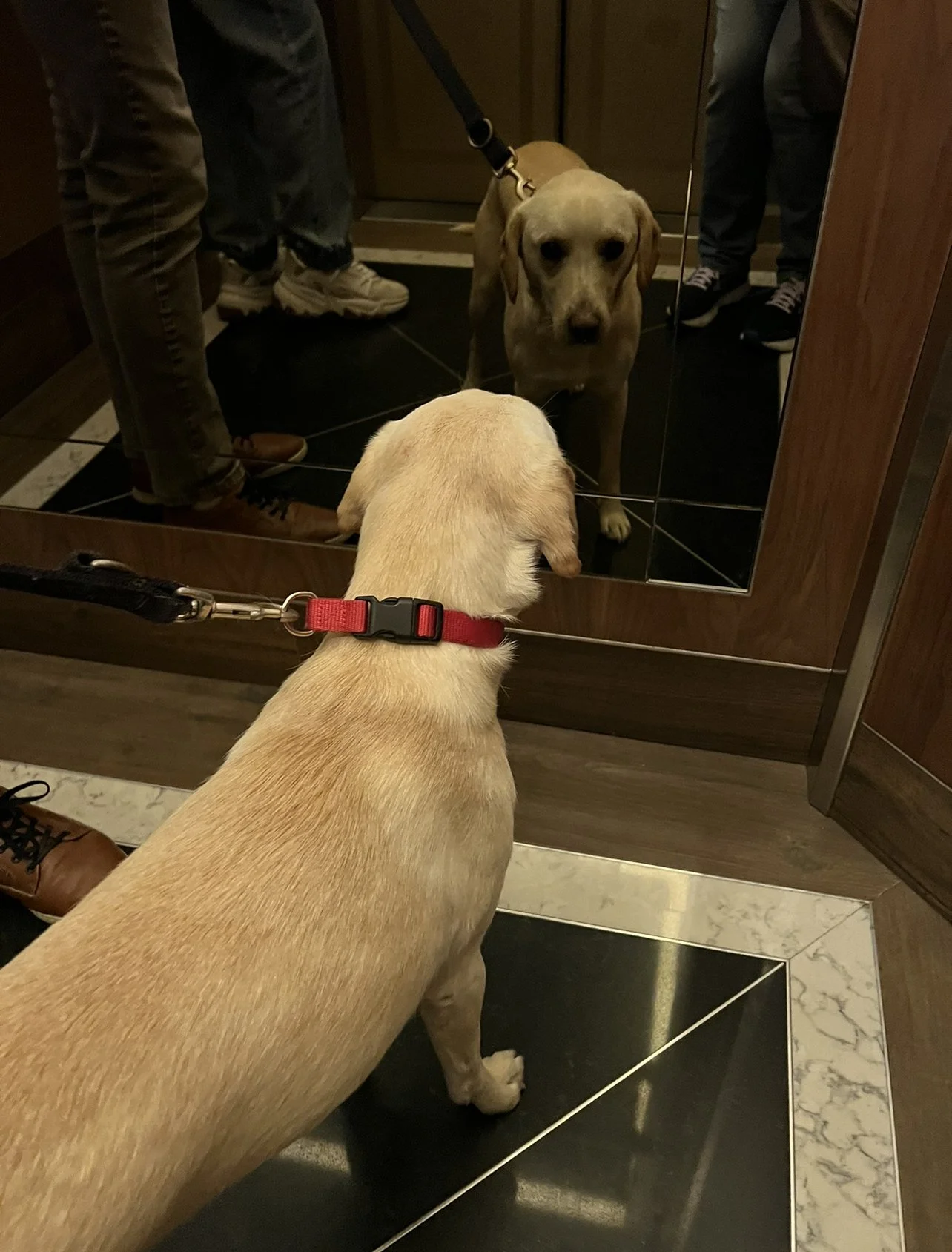Kim Concepcion is the Founder of Unmentionable Pets, a service that helps landlords and prospective tenants to resolve pet-related issues.
What does Unmentionable Pets do, and what is the meaning of your name?
Unmentionable Pets shares information, resources, and personal stories focusing on housing issues faced by pet owners. My background in Property Management and Residential Real Estate gives me unique insight into what landlords want and need, and the goal of Unmentionable Pets is to create win-wins within the housing space.
The name comes from my own experiences. Often, renters do not want to “mention” that they have 3 cats, or a large dog, or even a reptile to potential landlords. This can later cause more issues for both parties. I thought the name would encompass many different situations in pet ownership (not just certain breeds or multiples), so we ran with it. We help pet owners, landlords, and the public in general with resources and options for facing a pet housing situation.
How did you come up with the idea for this service?
As a Realtor, over the last 10 years, the pattern would happen over and over, and over again. I would get a call, the person on the other end would be looking for a rental, and the first question they would ask me was: “Do you know if the landlord will take pet XYZ?”
It would be a game of phone tag or outright no options to try and help place them in a rental. Many of them would just not say anything and call another agent pretending they did not have pets. I did not want that to be the reality. I created Unmentionable Pets to help share information with pet owners, and share resources with landlords about risk/reward options. We focus on how to get to a middle ground and support responsible pet ownership while paying attention to the landlord’s ROI (Return On Investment) and risk assessment from a business perspective.
My goal is also to help pet owners become homeowners and future landlords! With good fiscal choices, this helps to create more win-wins in the marketplace!
Have you ever had trouble finding pet-friendly housing? If so, how was the situation resolved?
Yes, I personally have had issues finding a home!
My husband is in the military, and most base housing has a list of banned dogs. However, my husband has wanted a pitbull-type dog since the day I met him. I always said no — not because of the dogs, but because we had to move a lot, and it was already hard to find something suitable for our family.
I didn’t want the added stress of having a pet that would be difficult to fit in that equation. So, our solution was that we knew we had to buy a home. From then on, we would be homeowners so that we did not have to let a landlord decide if the risk was worth it. That was 2009, and we have owned a home since then!
Do you have advice for property managers who are "on the fence" about no-pets (or breed restrictive) policies?
In my mind, it comes down to a few principles: communication, education, and willingness to serve responsible pet owners.
The first is communication: Be willing to talk about why you would or would not like pet "XYZ" in your unit. Is there something you do not know? Is there more history or a compensation that can make it a win-win? Ask the questions and be willing to have a conversation.
No-pet policies, as well as weight and breed restrictions, are a major reason why pets are surrendered to shelters.
Real-life people and people on paper can be quite different: they might be as good as their resumé, or not. And many landlords are just following their routine – but they forget about the most important thing in the rental market: occupancy.
There is a huge cost to turn a unit year after year. If someone discloses a pet, put things in place to protect your investment. Good communication allows you to make these decisions, so let potential tenants be open and explanatory about their habits, plans, and lifestyle.
Education: Let’s be real! Pets represent a risk. There are good and bad pet parents out there, and their attitude can be decisive. But also, renting a home is always a risk! There are good and bad tenants, pet owners or not!
Know your options. Assess the risk/reward in each situation. What can be done to limit risk and protect your property? LOTS – over the last 3 years alone, more insurance carriers have put out low-cost options.
I have found, in my experience, that the owners who do not disclose their pets tend to cause the most financial damage to a property – physically and by not paying their rent on time. Good pet parents are really that: parents, taking care of their pets. They are grateful for a stable place to call home. Make sure this is the renter you are getting. Check references, check employment, do an internet search! Invest upfront to gather information so that you can make the decision that is most profitable in the long run.
You can protect your investment as well as offer a pet family a place to live. The more you encourage and fact-check potential renters, the more they are prepared and ready if they need to rent again.
Willingness: Like-energy people tend to find each other. I often see people who own pets themselves become great landlords to other pet owners. This keeps pets with their families and out of rescues/shelters. Is that not the goal, to keep pets with the families that love them?
Maybe this willingness to help others is how I was raised, but the other side of me says to rental communities and landlords: THIS CAN BE VERY PROFITABLE! More and more people are getting pets instead of growing their families. Therefore, they're typically taking proper care of their animals and have a stable income to make things right if something were to happen! See that as an opportunity to grow your real estate portfolio.
Also, the innovators and successful people of most industries follow a plan, assess risk, but also break into new ground. You can stay status quo, but others will take advantage of this market and grow much faster.
Ask yourself:
-What are your goals?
-What is your timeline?
-What is the property rental history?
Everyone has a risk tolerance – find yours and see if there are win-wins to be had!
What tips would you offer to people who are looking for pet-friendly rental housing?
The first one is to please be a good pet parent. Your actions will impact the landlord and indirectly hurt or help the next tenant! Everything is connected and you do make a difference.
Do your own due diligence. Local laws, optional insurance – you must protect the landlord. Ask your vet, trainer, or pet-sitter for a formal recommendation. Be honest and upfront with as much detail as you can provide the landlord. The more information you give them, the better a decision they can make.
Respect if they are not interested. It is their investment, and the fact is, right now, landlords have a lot of options. So, if it is a no, thank them and move on.
Lastly, ask your network. Do you know anyone with pets like yours? Know any trusted agents to help? You might be surprised, if you just ask a few people, what options might be out there that you have not thought about. Or, of course, contact us and we'll be happy to help!
What is your service area, and how can people get more information? For those outside of your service area, do you have online resources?
Our team has the most knowledge of Hampton Roads Area of Virginia –think the towns of Norfolk, Virginia Beach, and Chesapeake. Also, San Diego County in California, and Lake County in Illinois.
Luckily, from my husband's time in the Navy, we know people who can help all over the country; thus why I can say coast-to-coast and really mean it! We are building our network slowly and would love referrals in any area for great agents, landlords, insurance people, etc., who share our passion for keeping pets and families together!
Our team has done a great job on our website, www.unmentionablepets.com, and you'll find us on other social media outlets as @unmentionablepets. So, make sure you take a look and give us a follow!
Is there anything else you'd like to say that our questions didn't cover?
The Unmentionable Pets community is focused on helping people, helping pets, and, in general, finding solutions. We are a place of education where questions are encouraged! There is always an answer – maybe not one you like, or maybe a tiny sacrifice, but there are always options! It's important to remember that we, the pet parents, are the ones who need to ask the questions!
I make it my personal mission to ensure our people are taken care of. Agents and Real Estate professionals can have a bad day, and that is something I want to know about so that I can have an opportunity to help or advocate for people with Unmentionable Pets. However, we are also a place of grace… let’s talk about it! Not every client goes with every agent, and vice versa! The goal is to find that balance on both sides and create the WIN-WINS!










